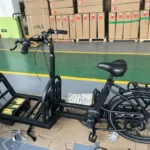Cargo bikes, often referred to as ‘bakfiets’ in Dutch, have a rich and varied history in Europe, evolving from essential commercial tools to popular family transport solutions and, more recently, to integral components of sustainable urban logistics. This journey reflects broader societal shifts, technological advancements, and changing urban landscapes.
Early Beginnings of cargo bike history in England
The inception of cargo bikes dates back to 1877 in England, when inventor James Starley designed three tricycle models intended for transporting goods and passengers. These early designs featured robust iron frames and ball bearings but lacked gears and had limited carrying capacity. Despite these limitations, they marked a significant departure from traditional handcarts and horse-drawn vehicles, offering a more efficient means of transport for small-scale goods.
Evolution Across Europe
As the 19th century progressed, technological innovations such as the development of the ‘safety bicycle’ in 1888 spurred further experimentation in cargo bike design. Entrepreneurs across Europe began adapting bicycles to carry heavier loads, leading to the creation of various cargo bike configurations. Notably, the ‘Long John’ design emerged in Denmark in the late 1920s, characterised by a long wheelbase with a cargo platform situated between the rider and the front wheel. This design allowed for improved stability and larger cargo capacities, making it particularly popular among tradespeople.
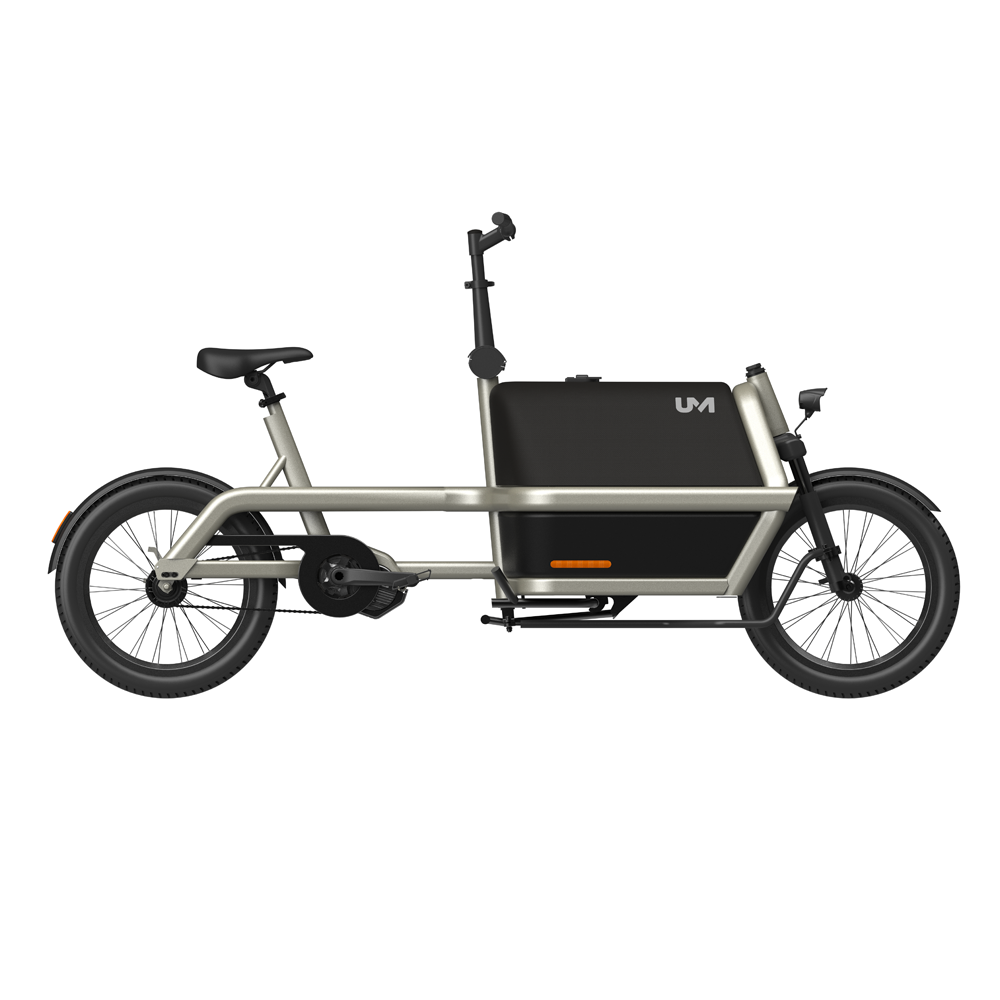
The Golden Era of Cargo Bikes
By the 1930s and 1940s, cargo bikes had become ubiquitous across European cities. They were employed by a wide range of professionals, including bakers, butchers, postal workers, and milkmen, serving as indispensable tools for local deliveries. In the Netherlands, the ‘bakfiets’—a three-wheeled cargo bike with a large box at the front—became a common sight, reflecting the country’s burgeoning cycling culture. These bikes were not only practical but also symbolised modernity and progress in urban mobility.
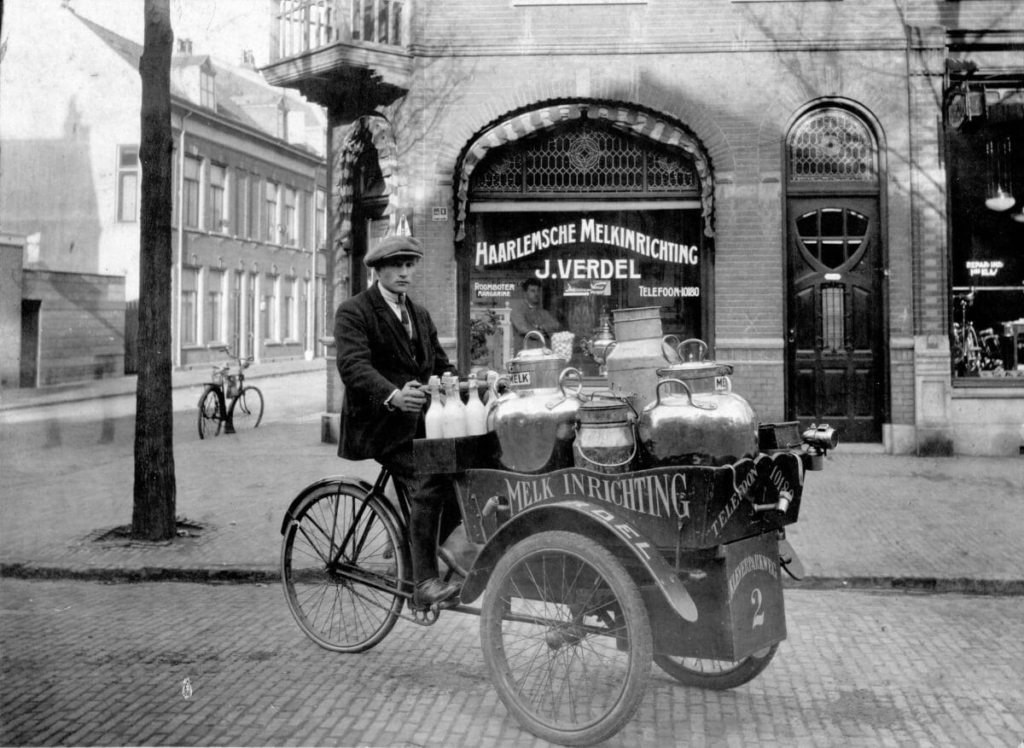
A milkman in Haarlem, undated. transportfiets.nl
Decline with the Rise of Motorisation
The post-World War II era saw a significant decline in the use of cargo bikes, primarily due to the increasing affordability and prevalence of motor vehicles. As cars and vans became more accessible, many businesses transitioned to motorised transport, leading to a reduced presence of cargo bikes in urban areas. This shift was also influenced by changing consumer habits, such as the rise of supermarkets and the decline of local deliveries, further diminishing the demand for cargo bikes.
Resurgence in the Late 20th Century
The 1980s marked the beginning of a cargo bike renaissance in Europe, driven by environmental awareness and a growing interest in sustainable urban living. In Denmark, the Christiania Bike—a three-wheeled cargo bike designed in the 1970s—gained popularity among families and communities seeking eco-friendly transportation alternatives. Similarly, in the Netherlands, modern iterations of the ‘bakfiets’ were developed, catering to parents transporting children and goods without relying on cars.
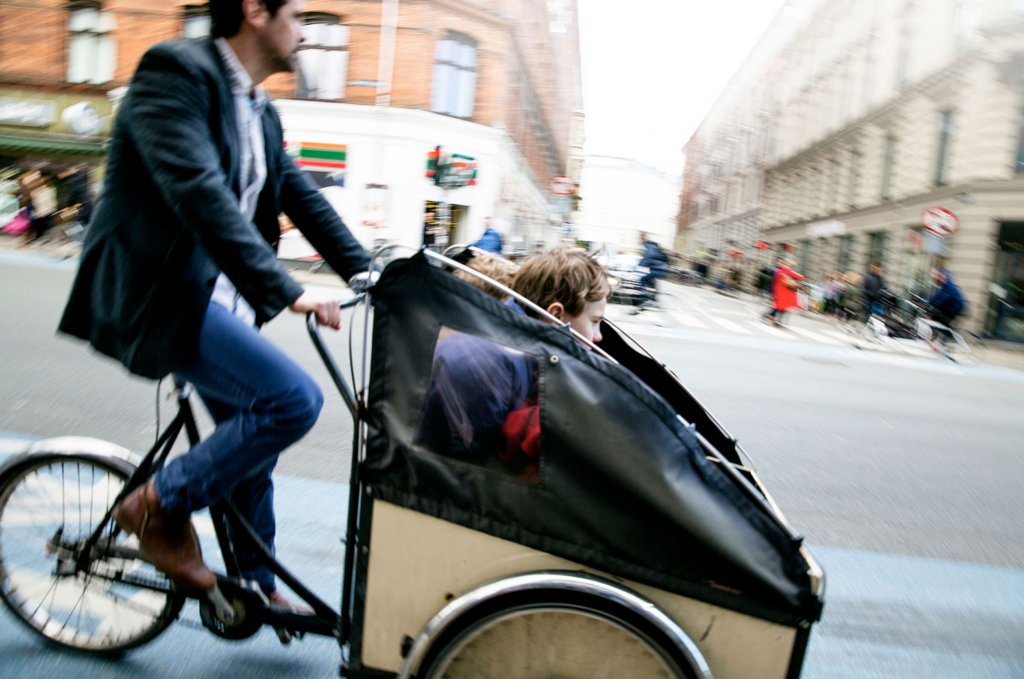
Integration into Modern Urban Logistics
In recent years, cargo bikes have experienced a significant resurgence, particularly in urban logistics. Their ability to navigate congested city streets, coupled with zero emissions, has made them attractive to both small businesses and large logistics companies. For instance, in Germany, cargo bike sales grew by 38% in 2020 and were projected to increase by another 66% in 2021, reflecting a broader European trend towards sustainable delivery solutions.
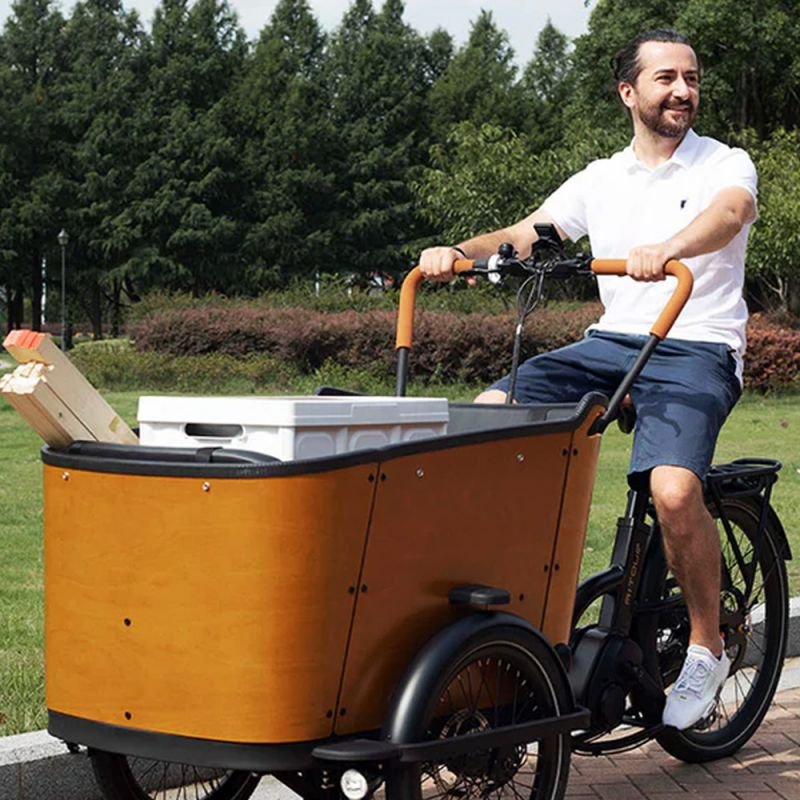
Technological Advancements and Future Prospects
The evolution of cargo bikes continues with the incorporation of electric assistance, enhancing their practicality for longer distances and heavier loads. Manufacturers like Riese & Müller have been at the forefront of this innovation, producing models that blend traditional cargo bike utility with modern e-bike technology. As cities across Europe implement policies to reduce carbon emissions and promote sustainable transport, cargo bikes are poised to play an increasingly vital role in the urban mobility landscape.
Conclusion
From their inception in 19th-century England to their current status as symbols of sustainable urban transport, cargo bikes have demonstrated remarkable adaptability and resilience. Their history reflects broader societal changes, technological advancements, and a continuous quest for efficient and eco-friendly mobility solutions. As European cities continue to evolve, cargo bikes are set to remain integral to the fabric of urban life, offering a versatile and sustainable alternative to motorised transport.
Time Line Summarize
➤ 1877 – The Origin: James Starley, England
• Early carrier tricycles designed for people/goods transport.
• Heavy iron frames, ball bearings, no gears.
• Beginning of non-animal powered freight transport.
➤ 1888 – The Safety Bicycle
• Invention of the “safety bicycle” revolutionises bike design.
• Introduction of chain transmission allows freedom in load and rider position.
➤ 1900s–1920s – Industrial Use Spreads
• Cargo bikes adopted by craftsmen, tradesmen, postmen.
• Common in urban and rural economies.
• Local blacksmiths often custom-built them.
➤ 1920s–1930s – Long John & Front-Loading Design
• Denmark pioneers the “Long John” (two-wheeled front-loader).
• Netherlands adopts three-wheeled ‘bakfiets’ (box bikes).
• Frame improvements allow larger, more stable cargo solutions.
➤ 1940s – Wartime Hero
• Cargo bikes used for food transport during WWII.
• Played key roles during Dutch “Hunger Winter” and evacuations.
➤ 1950s–60s – The Decline Begins
• Refrigerators, supermarkets, vans & cars reduce need for local delivery.
• Urbanisation and increased car ownership phase out commercial use.
➤ 1970s – New Roles in Activism & Community
• Cargo bikes used by political groups and student communities.
• Events like the International Bakfietsen Race (Lith, NL) gain traction.
➤ 1980s–1990s – Niche Nostalgia & Near Extinction
• Most manufacturers stop production.
• Seen more as vintage décor than active transport.
➤ 1990s–2000s – Resurgence for Family Use
• Danish Christiania bike reintroduces trikes for child transport.
• Dutch and Danish markets embrace cargo bikes as second car alternatives.
➤ 2010s – Urban Logistics Reimagined
• Courier companies and start-ups use Bullitt and Urban Arrow models.
• Electric assist (e-cargo bikes) becomes mainstream.
• Cities begin recognising cargo bikes as tools for decongestion.
➤ 2020s – Logistics & Legislation
• EU cities subsidise e-cargo bikes for businesses.
• Sales boom across Germany, Netherlands, France, and UK.
• Cargo bike festivals and logistics summits fuel community and design growth.
Reference
• Kirkels, Mark. A Short History of the Cargo Bike. September 2016. Available at: www.cargobikefestival.com
• Cox, Peter. Cycling: A Sociology of Vélomobility. Routledge, 2015.
• Norcliffe, Glen. Critical Geographies of Cycling: History and Policy. 2011. Cited in: Cox, P. Cycling Culture, 2015, p.133.
• Wikipedia contributors. Vélo cargo. Available at: https://en.wikipedia.org/wiki/Cargo_bike
• Wikipedia contributors. Long John bicycle. Available at: https://de.wikipedia.org/wiki/Long_John
• Motion Magazine. The Boom of E-Cargo Bikes in Europe. Available at: www.motion-mag.com
• Heinrich Böll Foundation. Cargo Bikes: Sustainable and Resilient Transport. Available at: https://eu.boell.org/en/cargo-bikes-sustainable-and-resilient-transport
• Wikipedia contributors. Riese und Müller. Available at: https://en.wikipedia.org/wiki/Riese_und_M%C3%BCller
• Karlsruhe Institute of Technology. History of Bicycle Transport in Germany. Available at: https://www.geschichte.kit.edu/english/761_2060.php


